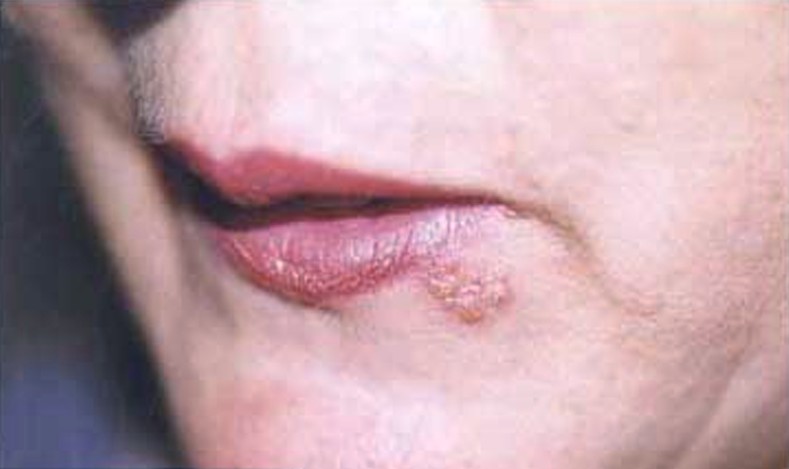 New Health Guide
New Health Guide
Cold Sores, also referred to as fever blisters, are tiny lesions that are filled with clear fluid. These are most frequently reported near the oral cavity (especially around the lips) and are usually found in group like lesions. Once these blisters or sores are burst, a crust like residue is usually formed which eventually heals within two-week time period.
It is imperative to mention that cold sores are caused by viral agent – Herpes Simplex virus (or HSV). There are two varieties of this virus; type 1 is responsible for causing fever blister whereas type 2 is mainly implicated as a causative agent for blisters on the genital areas. Due to viral association, the cold sore can spread to uninfected normal individuals via close physical contact with the blister fluid. This condition has no cure; however, it does get better with the use of antiviral agents. Most people report the recurrence of these lesions with moderate exposure to stress or in the setting of weak immune system.

Cold sores tend to cause localized lesions in the distinct areas of skin. Moreover, the sores follows a predictable course with varying intensity of involvement in different individuals. The symptomatology is highly variable, with some individuals showing no symptom at all while others experiencing mild illness. In most cases, signs of initial outbreak of lesions becomes evident within 3 weeks of viral exposure. The lesions resolve spontaneously within a few weeks without requiring any treatment. However, in case of any viral reactivation, the lesions may return abruptly.
Most frequently reported symptoms of cold sore are:
Most people who get affected with herpes simplex virus do not experience any symptoms, but some may experience discomfort and pain during active infection. Initially this infection is followed by formation of tiny sores that are filled with fluid as discussed above. These lesions are reddish or purplish in color and are most concentrated near the periphery of lips and mouth. Within a short period of time, these lesions amalgamate and burst to form crusty lesions. In some cases, associated symptoms like fever, moderate headache, general body aches, muscle aches, sore throat and swollen neck glands are also reported.
Children below 5 years of age also develop cold sore within their oral cavity. Often these lesions are misunderstood as canker sores. Young children are more vulnerable to spread this viral agent to other parts of their body due to immature immune system.
Once the body is infected by this virus, the person is vulnerable to develop recurrent episodes due to virus reactivation. Human body cannot completely overcome this virus which stays in the body in the state of dormancy. In some individuals, the virus permanently stays there without showing any signs of its presence; while in other cases, it may show exacerbations.
Before any such viral reactivation event, the affected person usually predicts the exacerbation due to prodromal symptoms like feeling of itching and tingling sensation. This reappearance of cold sore is regarded as recurrent. The secondary cold sores appear on nostrils, mouth, lips and even on cheeks and chin. The frequency of recurrent cold sore is 4-5 times in a year and each episode usually lasts for 4-10 days.
Cold sore usually doesn’t require medical treatment. However doctor’s advice can be taken if following problem occurs:
If a person is suffering from cold sore, it is advised to protect others from it. For this purpose some preventive measures can be taken:
Here is an article telling some possible treatment options for cold sores: http://www.just-health.net/Cold-Sore-Treatment.html